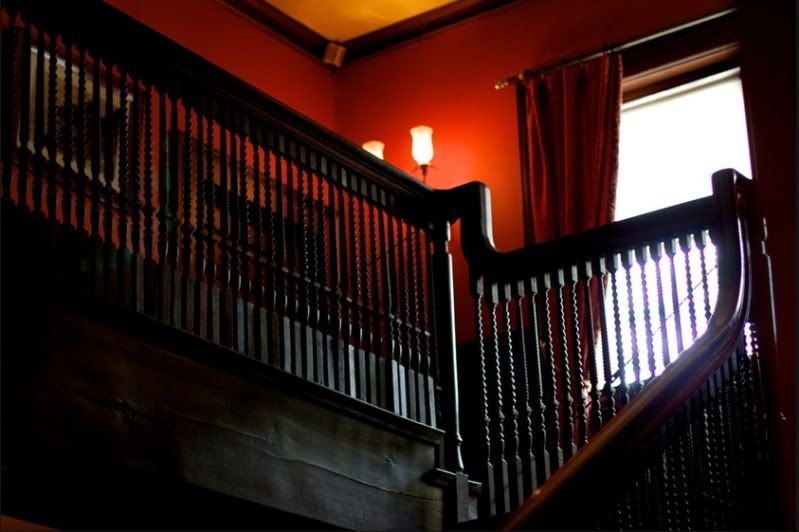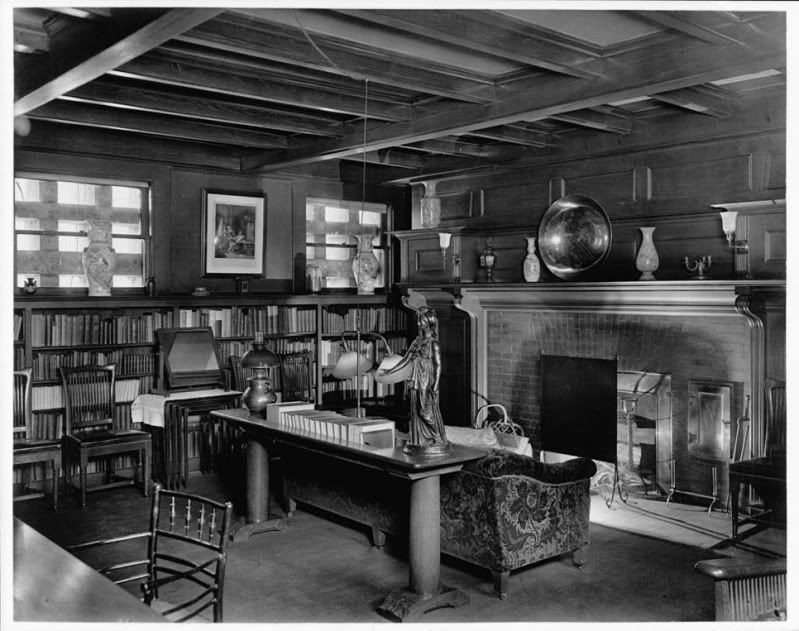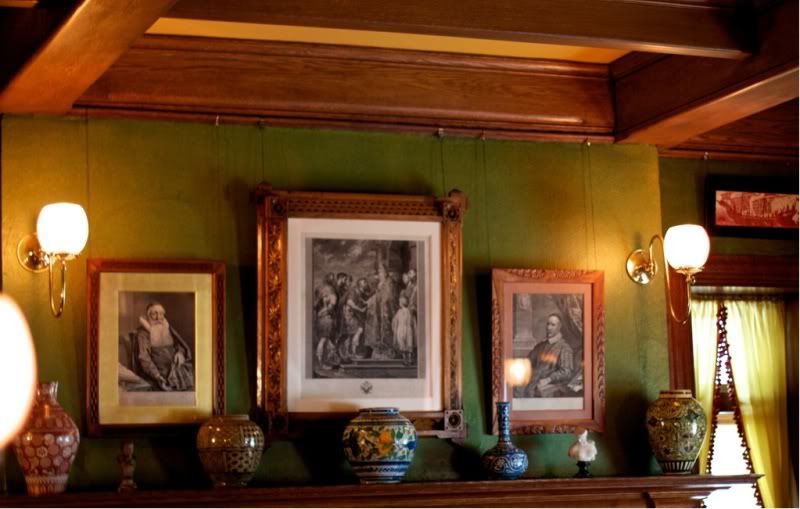Photo by Gemma Petrie
I haven't looked at the weather forecast for tomorrow, but it really doesn't matter. Rain or shine, get yourself down down to Prairie Avenue for the Glessner House Museum's annual tour of private neighborhood homes. Thanks to the hard work of the GHM staff, a boatload of volunteers (and the generosity of the owners who open their homes to a bunch of strangers) you can see how, in 1886, the other half lived. Actually, 'other half' isn't quite the phrase for this exclusive enclave. Other hundredth of one percent is more like it. If even that. After all, one hundred and twenty-five years ago, the residents of Prairie Avenue and its environs were some of the wealthiest families in the country, and it shows.
These days, the potted palms & antimacassars may be few & far between, even on Prairie Avenue, but the aura of exclusivity that ruled here in the 1890s is back, even though these days, more residents live in gleaming high-rises than live in red-brick & sandstone mansions. Either way, in the last twenty years or so, the neighborhood has changed from a wasteland of vacant lots, dilapidated buildings & light industry to become a healthy & vibrant home for another generation of Chicago. And tomorrow is your one chance to see the inside of some of the historic homes.
The centerpiece of the neighborhood, though, is the same as it was a hundred years ago--the John J. Glessner house, designed by Henry Hobson Richardson just before his death. The massive West Loop wholesale store that Richardson designed for Marshall Field & Company and the Lake Shore Drive home that he built for Franklin MacVeagh are long gone, but the Glessner's pink granite house is still here, and it's just as handsome as it was when it was new. Better than that--and unlike a lot of house museums--its rooms aren't filled with stunt doubles for the original furniture, but with the real thing, pieces handed down in the various branches of the Glessner family for more than a century.
And if you look beyond the handsome Issac Scott furniture, the William Morris rugs & the Galle glass vases, you'll see the innovative ideas that make the Glessner House feel, at heart, like a modern house: a layout that wraps the main public rooms around a light-filled private courtyard; on the first floor, a master suite that could be closed off from the rest of the house, yet have direct access to the covered carriage entrance; his-&-her dressing rooms; a combined home office/library with a reading nook & shelves for a large collection of books, all within arms' reach (not at the top of a ladder); a powder room off the the foyer, numerous public rooms that can be either opened to each other via sliding doors, or closed off for privacy and a schoolroom for the kids.
Backstairs, there is a sunny kitchen with a massive range & walls of white-glazed bricks for ease of cleaning, a walk-in cooler & tons of cabinets, and there's a nearby butler's pantry with more storage and a trendy copper sink.
And the decor of the rooms still has lessons for today. If you're one of those under the impression that the Victorians were sober killjoys, or 'afraid of color', think again. There was a golden yellow parlor, a Pompeian red hallway and a moss green library, that open directly onto each other, and look good doing it. Most of all, there's the Glessner's mashup of what we'd call world decor: Greek vases, Roman fragments, Syrian tables, a Burmese gong, Japanese carvings, and etchings by all the masters of the Renaissance, not to mention souvenirs of all their musician pals, some of whom just happened to be the greatest names of the late Nineteenth Century. Basically, a ton of stuff that, when all put together, looked great then and still does today.
Photo by Gemma Petrie
Anyway, the 125th Anniversary celebration and tour of the area homes is on Sunday, so go help GHM celebrate, see the other houses, then go back on a weekday to see the Glessner's own house at a more leisurely pace with a knowledgeable guide--and without the once-a-year crowds. It's an eye-opener.
Both photos courtesy of Gemma Petrie's Flickr set
Visit the Glessner House Museum's blog




I wish I could visit. Long time ago I was not interested in such homes until I discovered the mix you talked about. Victorians mixed naturally almost carelessly their treasures from travels and I think it could very well be the basis of our modern eclectic look.
ReplyDeleteYou're right, Jimmy. What's really interesting to me is that that particular look cut across all income levels and housing types. Even in a the Glessner's handsome library, interesting textural contrasts & careful placement of the individual elements were what mattered, not the items' intrinsic value, meaning that a working class family could achieve the same basic effect as the Glessner's, by decking out the mantel with Grandma's cracked Flow Blue teapot, a painted tray, a beaded-&-fringed Ojibwa tobacco pouch and some dried weeds from the back forty. The fact that none of that stuff was worth anything was irrelevant. If you want to talk about a truly democratic style, Victorian eclecticism was it.
ReplyDelete